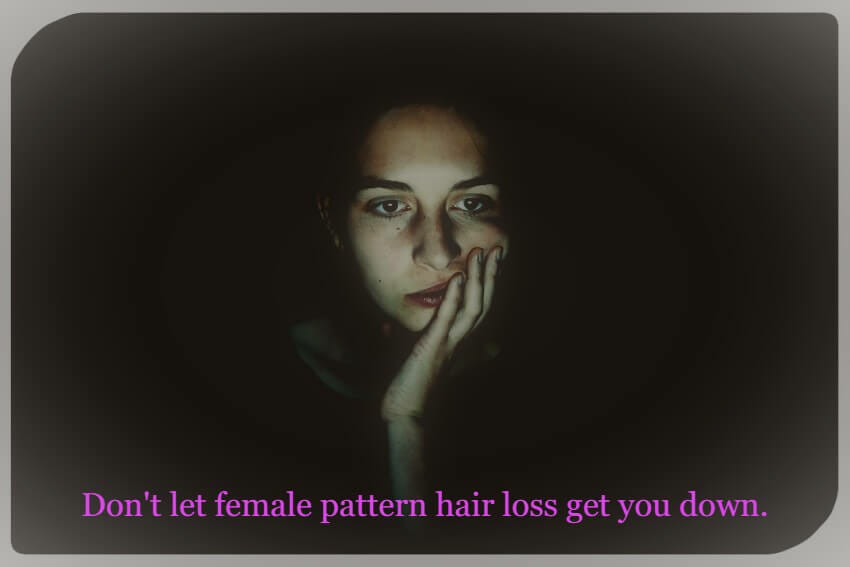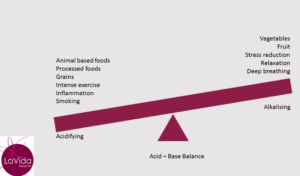Female Pattern Hair Loss…four words no woman wants to hear. And yet it might surprise you to know that it can affect up to 20% of women at some stage in their life with 13% of women in their 30s being affected.
Female Pattern Hair Loss (FPHL) most commonly occurs between the ages of 25 and 40.
For some, hair loss will be sudden and obvious (falling out by the handful or in patches). This is generally not FPHL but due to some other cause. However, for most the loss will be slow and insidious, not really becoming obvious to others until you’ve lost around 50% of your hair. But you will likely know that something seems different.
Most often the crown of the head or the central part will be the first to show signs of hair loss. You can check this by parting your hair in the centre and monitoring the width of the part.
Why do we care about hair loss?
Besides the potentially significant impact on self-confidence (55% of women with FPHL will report symptoms of depression), hair loss may be the external signal that something else is going on inside. So, the sooner it is investigated and addressed, the better.
The hair growth/loss cycle
The average hair growth per annum is approximately 10-15cm. Unlike animals that will shed hair in the warmer months, humans shed hair randomly. On any day, each hair will be in one of three phases of the hair growth/loss cycle.
There are 3 phases of hair growth/loss
The anagen phase – this is the active (growing) phase. A new hair is formed and will grow up the hair shaft, pushing the old hair out. This phase will last anywhere from two to six years (which explains why some people find it easier to grow their hair long compared to others).
The catagen phase – a transitional phase lasting for approximately 2 weeks where the hair transitions from growth to rest.
The telogen phase – this is the resting phase where growth has ceased and the hair will eventually fall out. This phase generally lasts for approximately 100 days with roughly 1 in 12 hairs in this phase at any one time. It is normal to shed anything up to 100 hairs each day.
Women with FPHL will often have a shorter growth phase and/or a longer resting phase.
Causes of hair loss
It’s important to remember that increased hair loss will start approximately 3 months after the initiating cause and it may be some months before you realise something has changed. Hence we may need to track back 6 months or more to identify possible triggers.
Potential causes may include:
High androgens (testosterone) – sometimes referred to as androgenic alopecia
This type of hair loss is most commonly found in women suffering from Polycystic Ovarian Syndrome (PCOS) and will often be accompanied by other symptoms of high testosterone such as acne, growth of facial or body hair along with changes in menstrual cycle or weight gain.
Changes in oestrogen
There is mixed evidence for the role of oestrogen in hair loss. Low oestrogen (especially after childbirth or in menopause) may be associated with increased hair loss in some women.
Stopping or starting hormonal birth control
Synthetic hormones will disrupt your own hormonal patterns.
Thyroid disease
In particular, autoimmune thyroid disease is closely associated with hair loss (most noticeably the hair on the temples – near the ears – and the outer parts of the eyebrows).
Nutritional deficiencies
Especially iron (even if not anaemic) but it is also important to consider zinc, protein, biotin and vitamin D. All of these are important for the production of healthy hair.
Stress
A period of stress may result in sudden hair loss (commonly called telogen effluvium) a few months later. It seems that the stress pushes the hair into the resting state earlier than normal. Stress could be in the form of trauma, illness, undereating or some other stressful event or change in your circumstances.
Some medications
Hair loss may be a side effect of some prescription medication such as antidepressants, antibiotics and acne medication.
The naturopathic approach to Female Pattern Hair Loss
The best way to resolve this problem is to identify the underlying cause that’s impacting your hair growth/loss cycle. Do you have undiagnosed PCOS, thyroid problems or nutritional deficiencies? Are there hormonal imbalances?
After taking a detailed case history and studying any pathology tests you have already had done, I may recommend further testing to rule causes in or out. This might include looking at auto-immune markers, nutritional deficiencies, digestion and diet, stress triggers etc.
Depending on what we find, a treatment plan will then be formulated to address the underlying cause.
What can you do to reduce your risks of developing FPHL?
As best you can, you want to optimise and maintain your general health. This includes:
- Plenty of rest and relaxation
- Reducing stress as much as possible and working on your coping skills
- Getting some sunshine
- Eating a healthy diet rich in plant food and lean protein
- Reducing the use of chemicals on the scalp/hair
- Don’t over-brush your hair
- Working with a naturopath to improve your digestion and hormonal picture if they aren’t great.
It’s important to be patient with treatment of FPHL. Given the growth cycle of hair, it can take 3-6 months to notice improvements.





